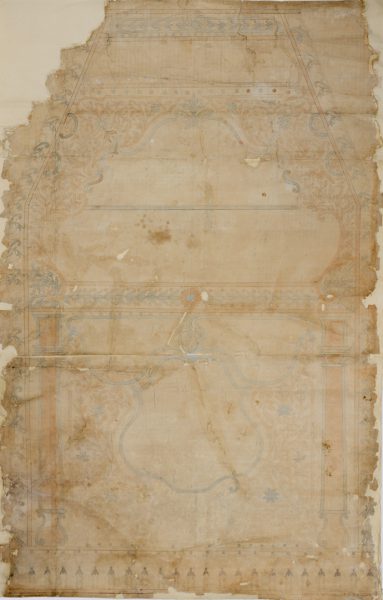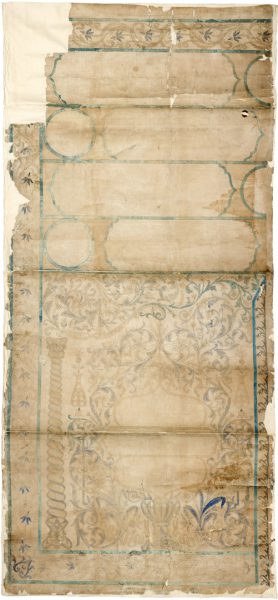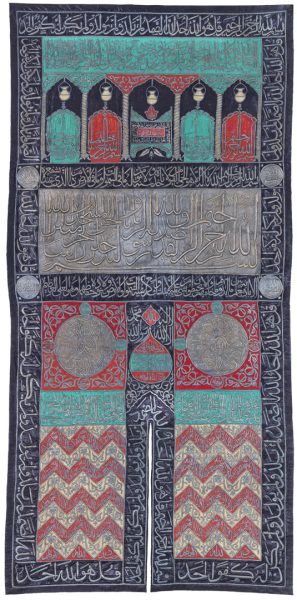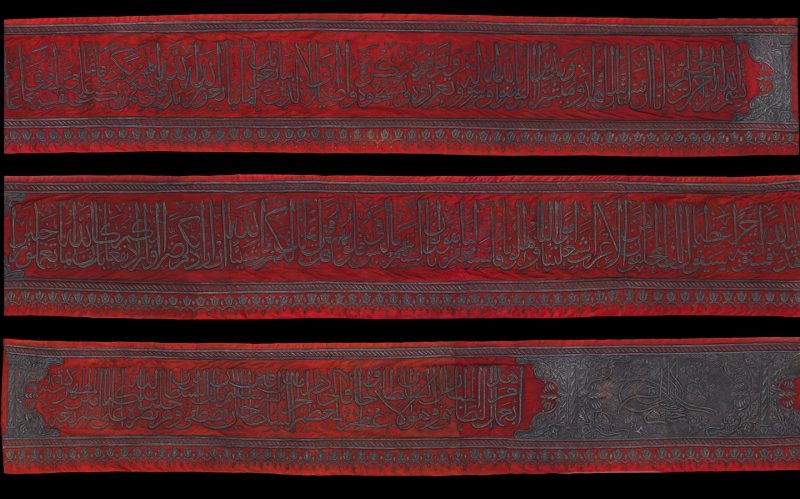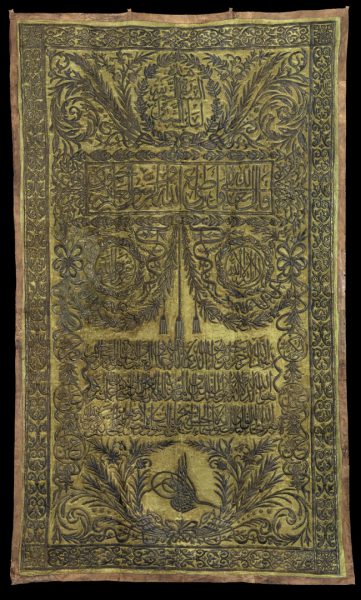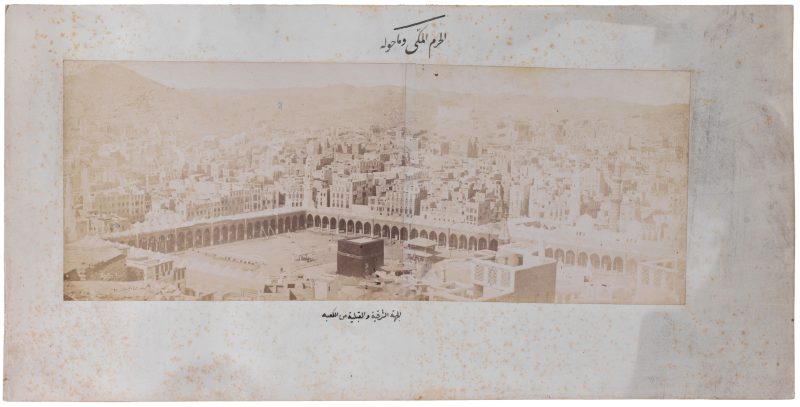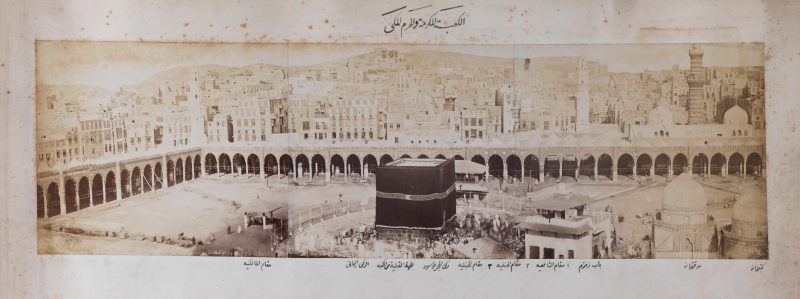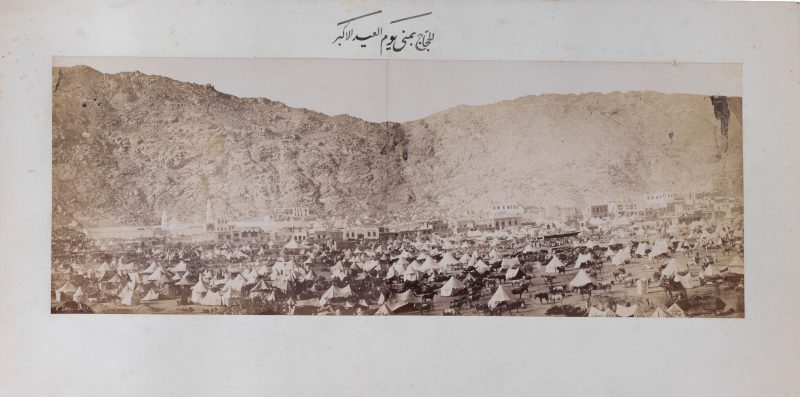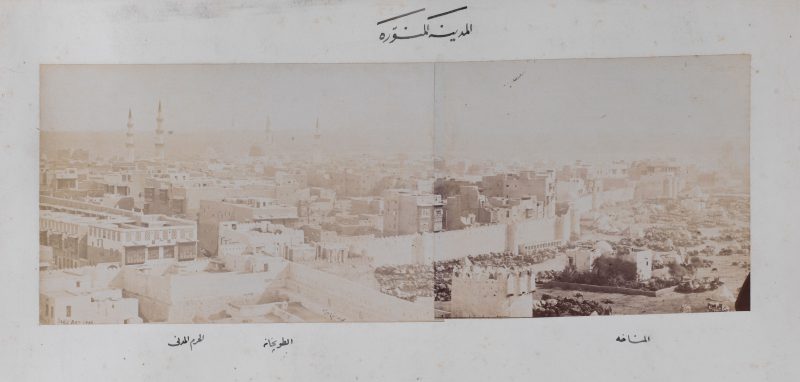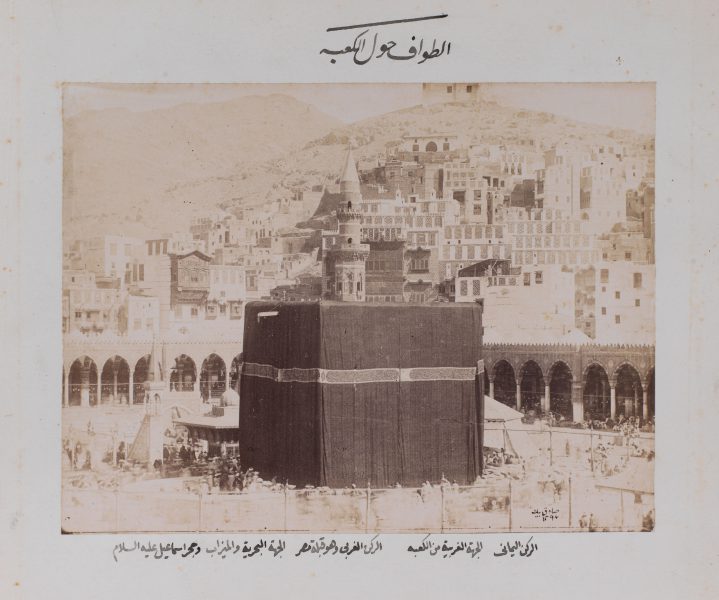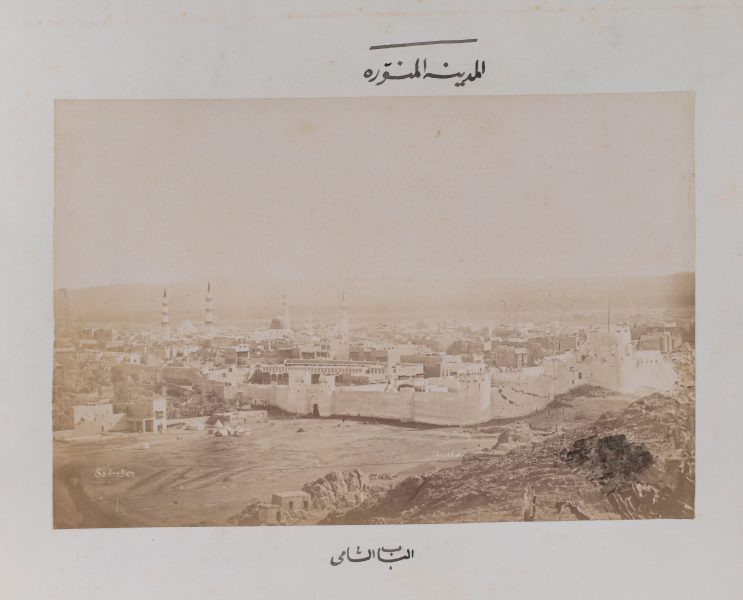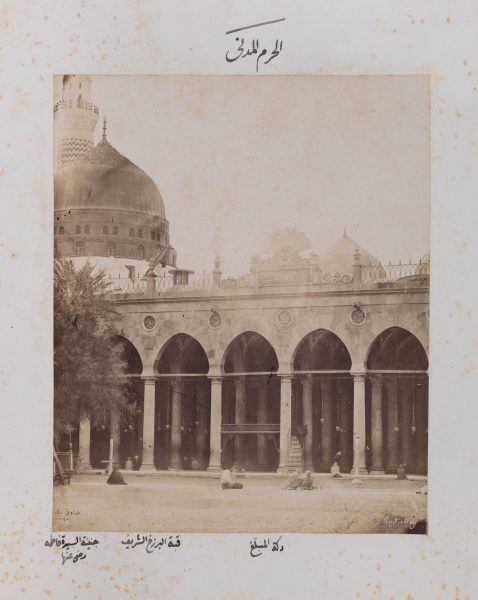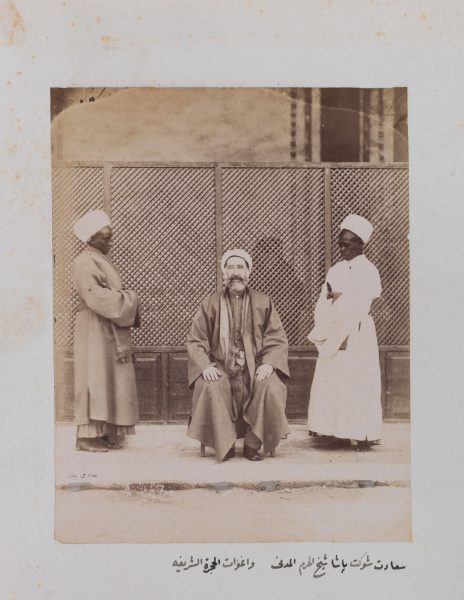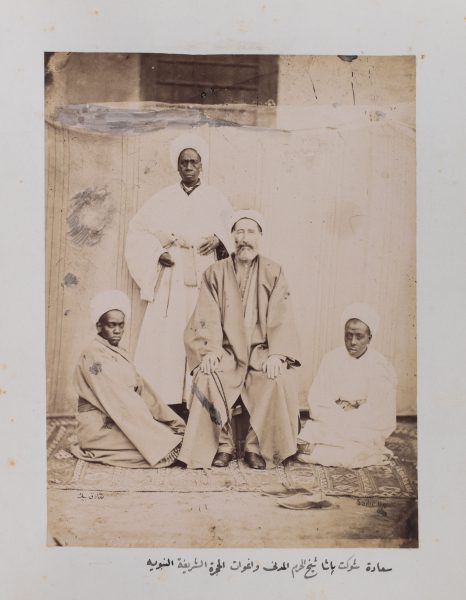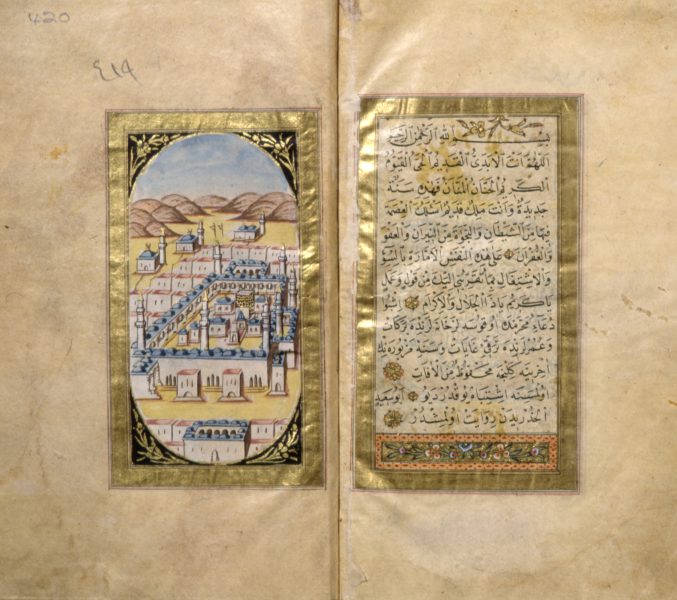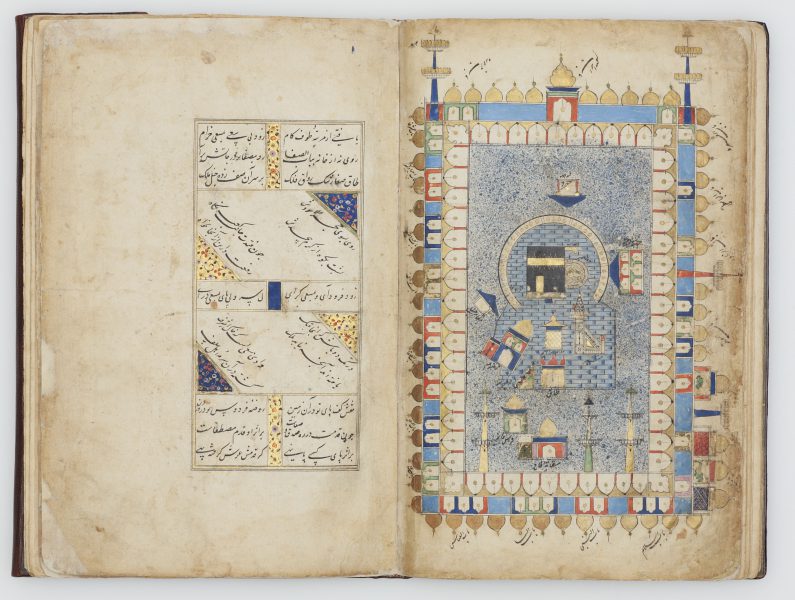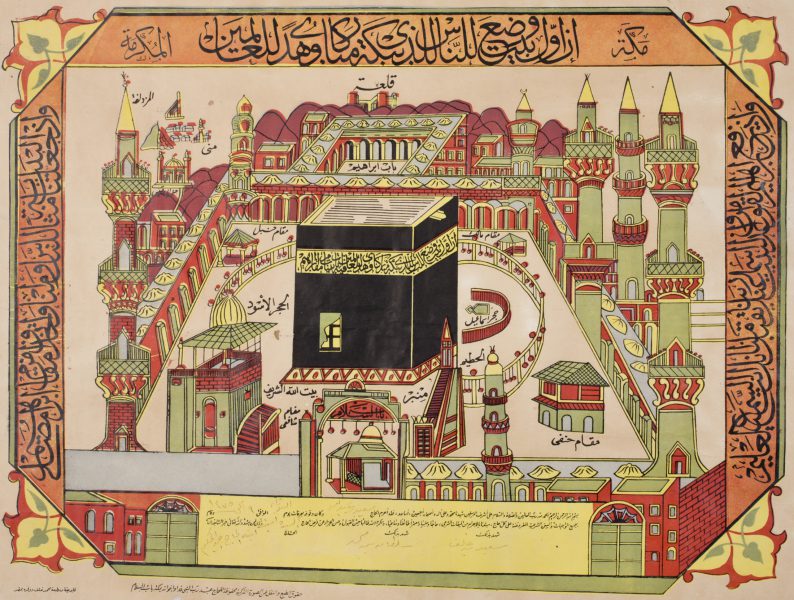


Professor Sir Nasser D. Khalili
Two traditions determine the make-up of most private collections today. One is that of the connoisseur, who gathers together a few select items on the basis of their aesthetic merit. The other is the comprehensive approach, where the emphasis of the collector is on assembling complete series of objects. The Nasser D. Khalili Collection of Hajj and The Arts of pilgrimage is remarkable in that it combines both these traditions within an overall scheme.
The Hajj and the Arts of Pilgrimage contains approximately 5000 objects including more than 300 textiles and many other related objects associated with Mecca and Medina. Combined, the Collection is the largest of its type outside the Topkapi Palace Museum in Istanbul. The various textiles woven and embroidered for the Meccan sanctuary are all represented: the external and internal kiswahs of the Ka‘bah, its belt and the curtains for its external and internal doors; the bag for its key; the curtain for the minbar of the Masjid al-Haram; and the kiswah of the Maqam Ibrahim, of which there are three complete examples. The most elaborate of these textiles are the curtains for the external door of the Ka‘bah (the burqu‘), and there are 21 of these, ranging in date from the early 17th to the early 20th century. One of the Meccan textiles in the Collection is a curtain for the minbar of the mosque, made in Cairo in AH 1365 (AD 1946) in the name of King Faruq of Egypt; it is a particularly fine example of a type known only from a few surviving specimens. Curtains were also made for the Prophet’s tomb and for the minbar and the various doors and mihrabs in the Prophet’s Mosque in Medina, and these too are extremely well represented, alongside several belt sections and one complete belt from the Prophet’s tomb. There are also five mahmals of the Egyptian and Syrian caravans, the empty palanquin representing the Ottoman sultan, which was carried on a camel and accompanied the pilgrim caravans on their route from Cairo and Damascus.
The role of the holy cities of Mecca and Medina as seminal centres of learning is illustrated by leaves from the very earliest copies of the Holy Qur’an and by manuscripts from later periods. Two important examples are a single folio from a Qur’an copied in the Hijaz and dated to the early 8th century and a folio from the Blue Qur’an, with verses 120–27 from Surah al-Baqarah which refer to God’s commandment to Abraham and Ishmael to purify the Ka‘bah for those who visit it and also Abraham’s prayer to God to make Mecca secure for those who believe. An outstanding 19th century copy of al-Bukhari’s important compilation of Hadith copied in Mecca, is also an important example.
There are also numerous representations of the Masjid al-Haram and the Prophet’s Mosque by Muslim artists as well as by Europeans. Many of these were made for rulers and wealthy patrons, and pride of place among these goes to the magnificent and exquisitely detailed panoramic view of Mecca, painted around 1845 by Muhammad ‘Abdallah, ‘the Delhi cartographer’, who was related to Mazhar ‘Ali Khan, a renowned topographical painter who was commissioned to paint the sacred monuments of the realm. It is probably that Muhammad ‘Abdallah accompanied him.
Printed versions of such views – on pilgrimage certificates (Ijazat al-Hajj), posters and postcards – became increasingly popular from the late 19th century onwards. The Collection includes an impressive number of these, printed in Egypt, Syria, Turkey, India, Pakistan and the Hijaz, as well as a remarkable group of reverse-paintings on glass with views of the two holy sanctuaries, the stations of pilgrimage and other sites of religious significance, such as Jerusalem, which many pilgrims visited on their journey.
Another part of the Collection revolves around the rites and rituals of pilgrimage, its administration, the upkeep of the two holy sanctuaries, the organisation of the pilgrim caravans and the procession of the mahmal. Very few coins were struck in Mecca and the Hijaz, and the Collection includes a fine example of a very rare dinar struck in ‘the mine of the Commander of the Faithful in the Hijaz’ in 105 AH (723–4 AD) alongside other coins ranging in date from the Abbasid period to modern times. It also includes later monetary denominations, such as the convenient Hajj banknotes, pioneered by the fledgling government of Pakistan after Partition, one banknote in the Collection is one of only two existing specimen notes, issued in 1951 by the State Bank.
Archival material forms yet another significant part of the Collection. A number of daily ledgers from the Dar al-Kiswah, the workshop in Cairo where the majority of the textiles presented to Mecca and Medina were woven and embroidered, and photographs of the workers and their work provide valuable information on the production of these textiles and are exclusive to the Collection. The whole is supplemented by an ever-growing library, with a number of important travellers’ accounts and other rare printed books and journals and major reference works on the subject.
The objects have been fully researched and conserved, and the conservation work carried out on the textiles in particular has provided some important information on the methods of their manufacture. Objects from Hajj and the Arts of Pilgrimage have been exhibited at The Nieuwe Kirk, Amsterdam; The State Hermitage, St Petersburg; The Art Gallery of New South Wales, Sydney; The Emirates Palace, Abu Dhabi; L’Institut du Monde Arabe, Paris, the Museum of Islamic Art, Doha, the Los Angeles County Museum of Art, and various other museums across the USA. Most recently, in 2011–12, some 55 items were included in the exhibition Hajj. Journey to the Heart of Islam at the British Museum, London (Jan–Apr 2012). In 2013–14, more than 80 were included in the exhibition Longing for Mecca. The Journey of the Pilgrim at the Rijksmuseum Volkenkunde, Leiden (Sept 2013–Mar 2014); and some 40 in Hajj, Le Pèlerinage à La Mecque at the Institut du Monde Arabe, Paris (Apr–Aug 2014). Objects were also exhibited in Amsterdam Tropenmuseum (Feb 2019–Jan 2020) and Abu Dhabi, Sheikh Zayed Grand Mosque (Sept 2017–Mar 2018).
In 2022, a monumental monograph of the Collection was published by Assouline. This wonderfully illustrated volume features highlights of the collection, with insightful chapters on the Islamic principles of Hajj, travel, rituals, sacred manuscripts, textiles, souvenirs and Western perspectives. A year later, I was humbled to receive a two volumed festschrift in my honour, written by the world’s most prominent specialists in the field of Muslim pilgrimage studies. The volumes consist of twenty-seven essays each of which focus on a particular part of the Collection and it is again beautifully illustrated with full-colour images of objects from the Collection. A third work entirely based on the Anis al-Hujjaj provides an overdue translation and analysis of this important manuscript, which has long been of interest to scholars of the Indian Ocean, as well as of pilgrimage. Nine further volumes form a comprehensive catalogue of the entire holdings of the Hajj and the Arts of Pilgrimage Collection.
The Hajj and the Arts of Pilgrimage Collection is a unique cultural asset which provides a comprehensive overview of Hajj, illustrating the religious, spiritual, historic, cultural and artistic aspects of pilgrimage to the Holy Sanctuaries of Islam. This Collection dedicated to the holiest of Muslim sanctuaries is internationally acknowledged as unmatched by any collection in the entire world. So, in order to comprehend the diverse range of personal experiences and the multifaceted nature of Hajj, that is a fundamental component of Islam, is has become essential to study this collection.
Nahla Nassar
Qaisra Khan
Filter by:
